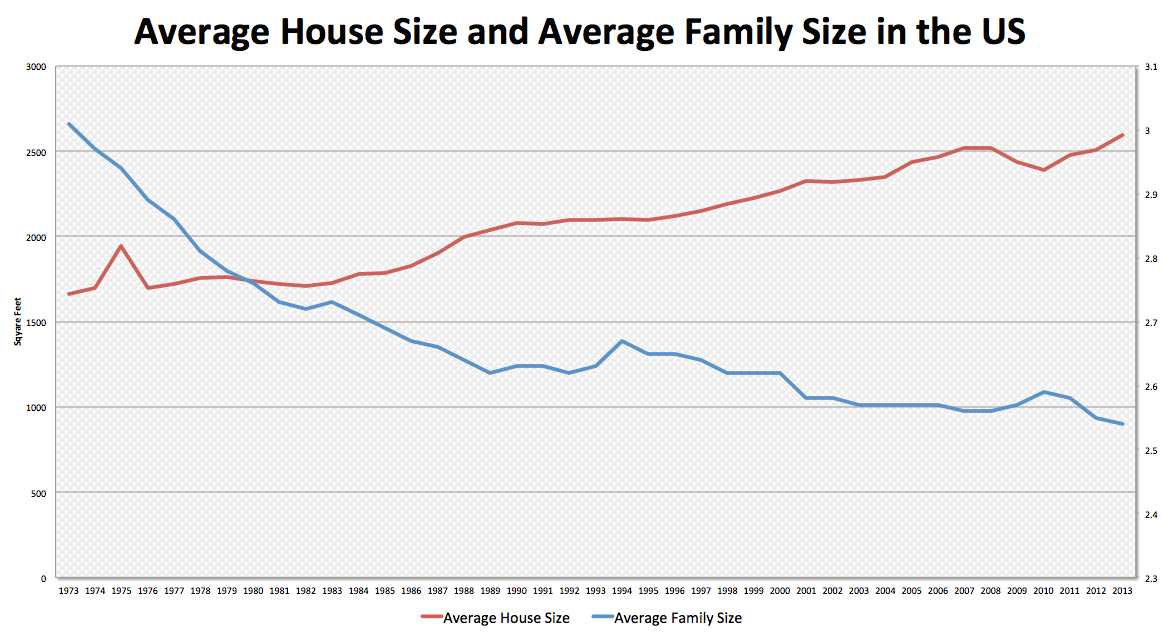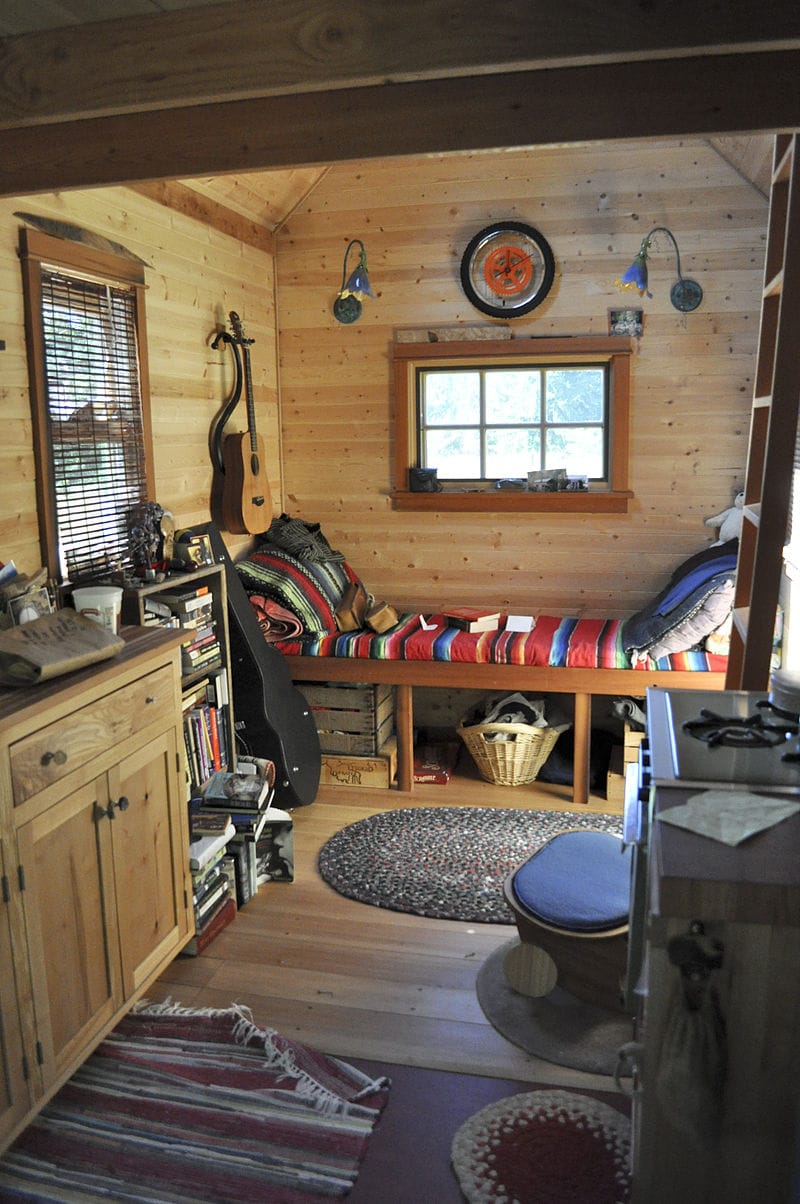In a trend that has clearly been growing since the 1980s, the average size of new American homes reached a record high of 2,598 square feet in 2013. The median size trails this number somewhat, but has followed a similar trajectory, suggesting that these numbers are not merely a reflection of the 1%’s extravagance.
 Data source: US Census Bureau
Data source: US Census BureauAs the chart above shows, our houses have been getting bigger while our families are getting smaller. Per person, we are taking up more space. Some might claim that this is an encouraging trend, showing an increase in living standards. A more cynical view holds that this data characterizes an evermore materialistic society which spends money only in competition with others, but leaves everyone worse off in the race to the top.
Both points of view get something right. The United States is a rich country in global terms, despite recent economic crises and significant class divisions. The fact that we can afford to buy larger and larger homes speaks to the resilience of our economy. But it also speaks to our wastefulness as a society, and it’s far from clear it makes us happy.
There is a small and fascinating push in the opposite direction. The Tiny House Movement is comprised of individuals who consciously choose to inhabit homes quite a bit smaller than the standard American ideal. In sharp contrast to the perpetually increasing national average, those who see themselves as a part of the Tiny House Movement find residence in homes often under 400 square feet, sometimes not much larger than 100 square feet.
Consider the home of Tammy Strobel and Logan Smith. In 128 square feet, they have a sitting area, toilet, kitchen, desk, closet, shelves, and sleeping loft. Watch them give a virtual tour of their surprisingly minimalist and cozy dwelling:
This house is much smaller than most would say they desire. But it’s difficult to watch that video and not be struck by how happy they seem with their lifestyle.
The motivations behind this admittedly marginal idea range from economic and environmental to existential concerns. Tiny houses are indeed cheaper, less resource-intensive, and offer one path to a simpler lifestyle. But they also offer those who are interested in donating a significant portion of their income to charity a way to reimagine the notion of “cutting back.”
The Tiny House Movement didn’t originate the idea of living in a tiny space, of course. Countless families living everywhere in the world are forced to inhabit spaces much smaller than what the average citizen of a developed nation can afford. And in populous cities, those of modest means often choose very tiny apartments because anything more substantial is financially out of reach. The very concept of putting these houses on trailers, as in the video above, brings to mind the fact that many people live in mobile homes of comparable size.
 Photo credit: Flickr/Tammy Strobel
Photo credit: Flickr/Tammy StrobelWhat makes this movement different is that it comes from a conscious decision to shape one’s living space. Because they’re designed to look like houses, often complete with French doors, vaulted ceilings, and even guest beds, they need not feel ascetic. These are homes people can feel proud of, which means it is much more likely they’ll stick with the choice long-term. And though many who choose to live this way could afford more spacious quarters, they believe their needs can be met with modest investment.
Of course, a tiny house will not be right for everyone, or even most people. But exploring the world of tiny houses can reveal much of the excess that we don’t even realize we surround ourselves with. And if we can shrink the portion of our income that we spend on ourselves, a more significant amount can go to helping those who really need it. Since there’s good reason to think that excess consumption can actually make us less happy, such a shift has the potential to make everyone better off.
More inspiration for living in less space:
· A New York Times spotlight on a couple’s 702 square foot home
· A video showing an innovative design for a 420 square foot apartment



